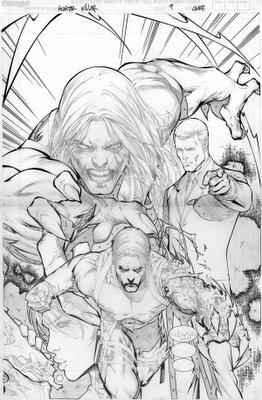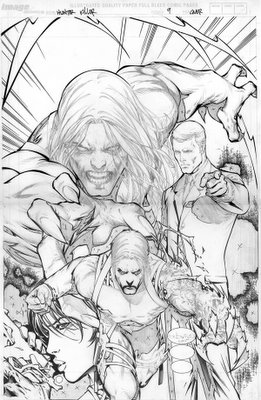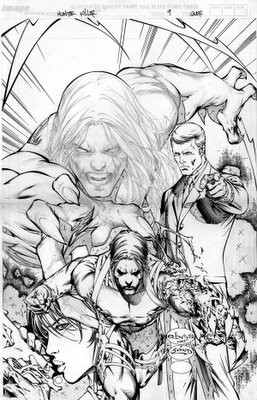Think Before You Ink Part 1 0f 9

THE PENCILS
When you’re starting off, or relatively new to inking, it helps to break things down step by step into a methodical approach. There is no “right way” or “wrong way” to do this, but I’ll show you what works for me and maybe it’ll help you in your approach. I’ll use the recent cover of Hunter Killer #9 as an example of a more methodical approach to inking. I’ve been inking so long, I’ll usually skip around on the pencils and ink whatever I feel like, but for this example, I’ll try to ink in clear steps and show you the thinking behind them. The goal here is to “think before you ink” and ask yourself how you are going to approach it and why. Every line you put down should mean something and have a purpose. Ask yourself what is the penciler is trying to accomplish and how can you collaborate with him to achieve that goal?
The first step is to look at the pencils. Are they tight or loose? How do you want to approach them? What will you need to add or embellish? In this case, the penciler Eric Balsadua is pretty tight and comes from the Marc Silvestri school of penciling. So my usual Top Cow style of inking should be the way to go. Lots of rendering and energetic line work. All the information is there, not much too add, but I’ll tighten things up as I go. A tip for beginning inkers, if you’ve never worked with the penciler before, now would be a good time to call him with any questions or just to introduce yourself and see what he’s looking for in the finished product. Also, if you need character reference, ask your editor. It’s a great way to get free comics delivered to your door!









